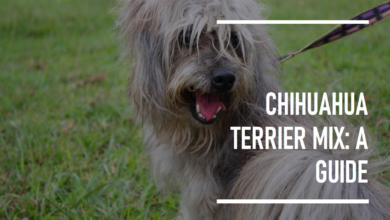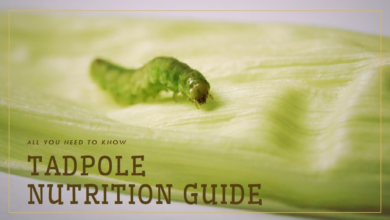Can Dogs Eat Black Pudding? A Complete Guide for Dog Owners

Black pudding might be a beloved part of a traditional breakfast for many humans, but when those puppy eyes are staring at your plate, you might be wondering — can dogs eat black pudding safely? The answer isn’t as simple as a yes or no. While some ingredients might be harmless, others could pose serious risks to your dog’s health.
Made from pig’s blood, fat, oats, and various seasonings, black pudding is rich in protein and iron — nutrients that dogs also need. However, the high salt content, spices, and saturated fat levels raise important questions about whether this food is suitable for canine consumption.
Can dogs eat black pudding without facing health issues? That depends on portion size, ingredients used, and your dog’s individual health condition. What seems like a tasty bite to you could trigger digestive upset or even more serious problems in dogs, especially if fed regularly.
This guide breaks down everything you need to know, from what’s inside black pudding to whether it has any nutritional value for your furry friend, and how to make safer snack choices your dog will love.
🥓 What Is Black Pudding?
Black pudding is a type of blood sausage, popular in the UK, Ireland, and parts of Europe. It’s made primarily from:
-
Pig’s blood
-
Fat (usually pork fat)
-
Oats or barley
-
Seasonings (such as salt, pepper, herbs)
It’s cooked and then cooled before being served either cold or fried. While it’s high in protein and iron, it’s also rich in fat and salt — which may be problematic for dogs.
🐶 Is Black Pudding Safe for Dogs?
Dogs can technically eat black pudding in very small amounts, but that doesn’t mean they should. It contains ingredients that might not be toxic but are far from ideal for canine diets.
The main issues stem from salt content, fat levels, and seasonings. A bite-sized piece likely won’t harm a healthy dog, but regular or large amounts could contribute to serious health problems.
🧪 Ingredient Breakdown: Is It Dog-Friendly?
Let’s take a closer look at the key components of black pudding and how they affect dogs.
1. Animal Blood
Pig or cow blood, when properly cooked, is not toxic to dogs. It contains protein and iron, both of which dogs need. However, the risks of contamination or improper cooking make it an unreliable source of nutrients.
2. Fat Content
Black pudding contains high levels of saturated fat. While dogs do need fat in their diet, too much can lead to obesity, digestive issues, and pancreatitis, which is a painful and potentially dangerous condition.
3. Oats or Grains
Oats are generally safe for dogs and can even be beneficial in moderation. However, some dogs may have grain sensitivities or digestive issues related to complex carbohydrates.
4. Salt and Seasonings
This is one of the biggest red flags. Black pudding often contains high amounts of salt, along with spices like pepper or even onion powder, which are toxic to dogs. Excessive salt can lead to sodium ion poisoning, dehydration, and long-term kidney damage.
⚠️ Risks of Feeding Black Pudding to Dogs
Black pudding isn’t considered a toxic food, but it does come with a list of risks when given to dogs:
-
High salt content: Can cause vomiting, diarrhea, tremors, or worse in large quantities.
-
Fat overload: May trigger pancreatitis, especially in breeds prone to it (like Miniature Schnauzers).
-
Digestive upset: Unfamiliar or rich foods can lead to gas, bloating, or diarrhea.
-
Obesity: Regular indulgence in fatty, salty foods can contribute to weight gain.
-
Allergic reactions: Dogs with grain or meat sensitivities could react to certain ingredients.
✅ Are There Any Benefits?
When given in tiny amounts, cooked black pudding may offer some iron and protein, both important nutrients for dogs. However, these can easily be sourced from dog-safe foods that don’t carry the same risks.
So while black pudding might have trace benefits, they’re outweighed by the potential harm — especially if fed frequently or in large portions.
🐾 How Much Black Pudding Is Too Much?
If your dog accidentally snatches a small piece, there’s usually no need to panic. Just monitor for any signs of digestive upset. But intentionally feeding black pudding should be avoided or strictly limited to a bite-sized piece once in a long while.
Recommended Guideline (if given at all):
-
Small dog: No more than 1–2 teaspoons
-
Medium dog: 1–2 tablespoons
-
Large dog: Up to 3 tablespoons
These are still not ideal — use only in rare, supervised cases.
👩⚕️ What Do Vets Say?
Veterinarians generally advise against feeding black pudding to dogs. While not acutely toxic in tiny quantities, the long-term impact of salty, fatty, and seasoned food can lead to health complications.
If your dog suffers from heart disease, kidney problems, digestive sensitivities, or weight issues, black pudding should be kept completely off the menu.
🐕 Healthy Alternatives to Black Pudding
Want to treat your dog without the risk? Try these safe and nutritious alternatives:
-
Plain cooked chicken or turkey
-
Boiled liver (in moderation)
-
Unsalted beef or lamb strips
-
Commercial dog treats made with blood protein (formulated for dogs)
-
Freeze-dried organ meats
These provide the protein and iron benefits without the excessive salt or seasoning found in black pudding.
🚨 What to Do If Your Dog Eats Too Much
Accidents happen! If your dog gobbles down a large piece of black pudding, keep calm and follow these steps:
1. Monitor Closely
Look out for symptoms like:
-
Vomiting or diarrhea
-
Excessive thirst or urination
-
Lethargy
-
Shaking or tremors
2. Ensure Fresh Water
High salt intake may lead to dehydration. Provide clean, cool water and encourage drinking.
3. Contact a Vet
Call your veterinarian if your dog has eaten a large quantity or shows any signs of distress. Early intervention is key with salt or fat poisoning.
📝 Final Thoughts: Should You Let Your Dog Eat Black Pudding?
It’s tempting to share a bit of your breakfast, especially when those puppy eyes are locked on your plate. But black pudding just isn’t worth the risk. Between the salt, fat, and possible seasonings, even a small piece can trigger unwanted symptoms in sensitive dogs.
There are healthier, dog-safe treats available that provide the same satisfaction — without compromising your pet’s well-being.
❓FAQs
Can puppies eat black pudding?
No, puppies have even more sensitive stomachs and should avoid rich, salty foods.
Is homemade black pudding any better?
It can be slightly safer if you control the salt and spices, but the fat content is still too high for regular feeding.
Are other types of blood sausage okay for dogs?
Most follow a similar recipe and pose the same risks. Always check the ingredient list and consult your vet.




